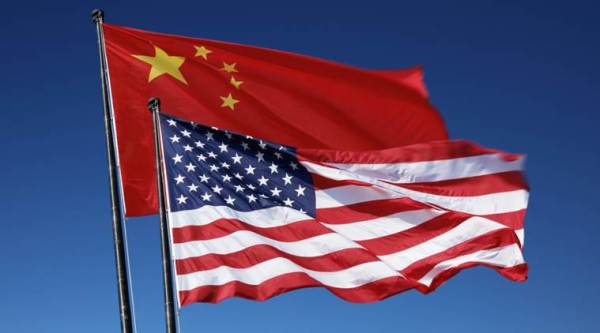China, US slap USD 16 bn tariff on each others good as trade war escalates
The two sides went ahead with the second bout of tariff against each other even as their officials held talks in Washington to find a way out amid the increasing pessimism over an impending solution to end the trade dispute.

China’s commerce ministry said in its statement that China will not accept any unilateral trade measures but welcomes dialogue. (Representational Image)
China Thursday slapped 25 per cent tariffs on American imports worth about USD16 billion in retaliation to a similar move by the US as the two economic giants escalated their trade war. US has imposed a steep import tariffs starting today on USD 16 billion of Chinese goods over what Washington has called rampant theft of American technology.
The two sides went ahead with the second bout of tariff against each other even as their officials held talks in Washington to find a way out amid the increasing pessimism over an impending solution to end the trade dispute. The escalation came despite Chinese Vice Commerce Minister Wang Shouwen held talks with US Treasury under secretary David Malpass to resolve the dispute.
1m 51s

ASEAN focuses on trade 'pressure' as Trump ramps up tariff tensions
Donald Trump's move to ratchet up pressure on China by proposing higher tariffs on $200 billion worth of imports prompts more strong warnings from Beijing. And, as Laura Frykberg reports, ASEAN ministers meeting in Singapore are considering their options, amid calls from their hosts to 'maintain composure'.
The initiative to resume talks followed a spate of tit-for-tat tariff slapped by both the counties. US President Donald Trump is insisting that China should bring down the trade deficit by USD 100 billion immediately followed by USD 200 billion by improving access to more US goods ensuring intellectual property rights of the American technology.
Trump also has accused China of manipulating its currency to combat US tariffs. China, which has a trade surplus of USD 375 billion in its USD 636 billion bilateral trade with the US, is trying to retaliate in the same measure though its officials maintain that Beijing is reluctantly following the suit.
The Chinese Commerce Ministry said it will file a complaint with the World Trade Organisation (WTO) against the US move. By wilfully imposing the tariff today, the US has obviously violated WTO rules, a statement issued by the Ministry said.
“China firmly opposes it and has to once again take necessary counter-measures,” it said. The trade war between Beijing and Washington started in July with each side imposing 25 per cent tariffs on USD 34 billion of each other’s exports.
China’s tariff list covers 333 products including large passenger cars, motorcycles and baby carriages. The US added its latest 25 per cent tariff today, completing Donald Trump’s first round of measures targeting USD 50 billion in Chinese products.
Observers played down the prospect of a breakthrough in the talks between Wang and Malpass, saying they expected tensions to increase further, Hong Kong-based South China Morning Post reported. The ongoing trade conflict will reduce China’s economic growth by 0.2 percentage points this year and 0.3 percentage points in 2019, according to estimates by economists, a report by the Post said.
A commentary by state-run news agency Xinhua today struck a cautious tone on possible outcome of the talks. “The success of the discussions also requires a mutually recognised priority list of problems. However, Washington remains nebulous in this regard, given that the US authorities such as the White House, the Treasury Department and the Office of the United States Trade Representative have been at cross purposes regarding their priorities with China,” it said.
“The maximum pressure approach featuring my-way-or-no-way logic and zero-sum mentality has proved fruitless for China, and risks a renewed no-win prospect,” it said.
Some commentators also struck a note of caution for China in taking tit-for-tat approach. Zhang Yansheng, chief research fellow of China Centre for International Economic Exchanges, said that the US was blaming other countries for its decreasing competitiveness.
“The best strategy that China can adopt is not to react so quickly. Let all problems and differences be fully exposed first in order to do expectation management and form consensus internally,” he said.
“When we are slower, we will make fewer mistakes, and we will be able to better manage and control mistakes when they happen,” he told the Post.











































No hay comentarios:
Publicar un comentario